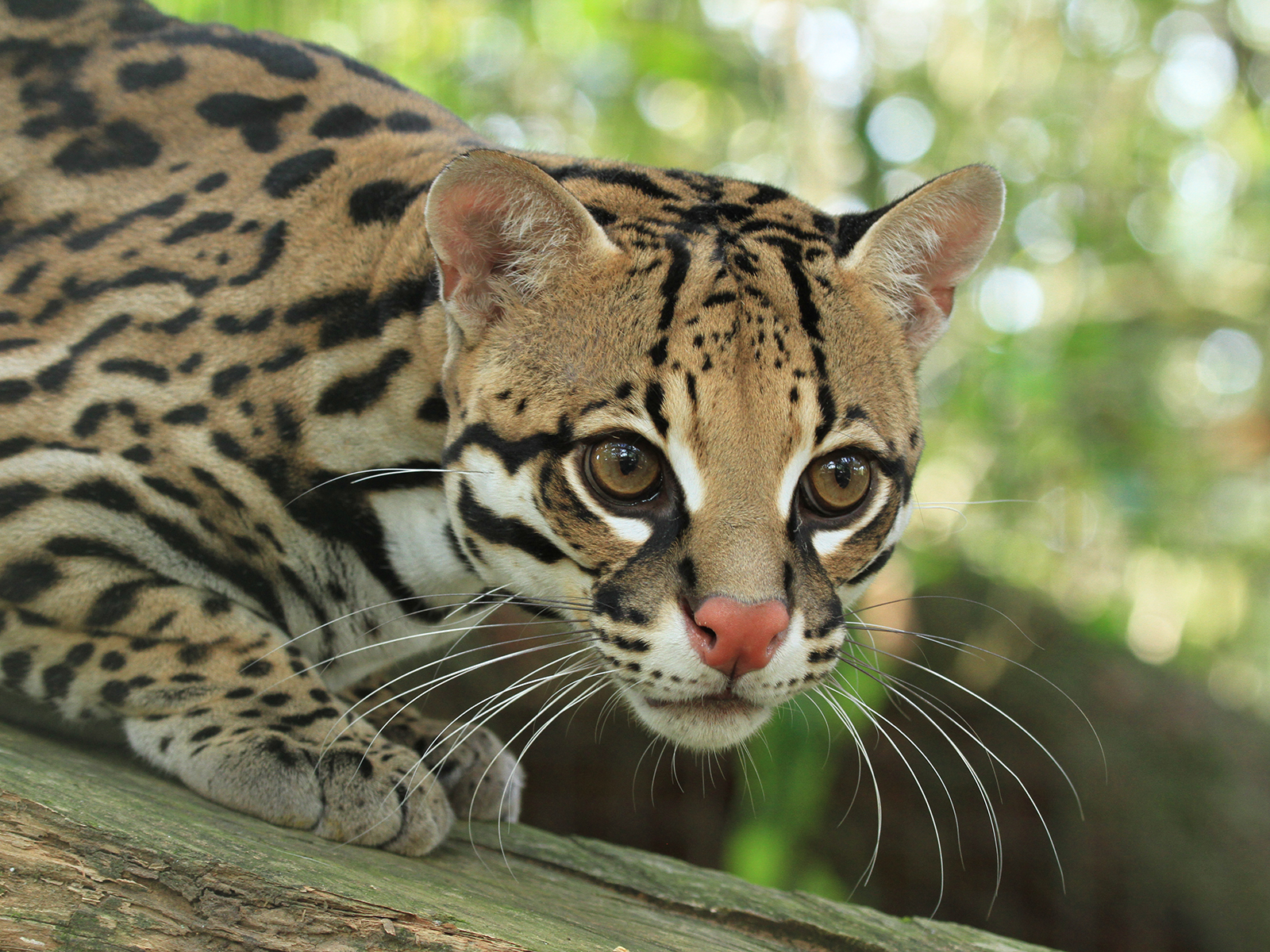Ocelot
Leopardus pardalis
Class
Mammalia
Order
Carnivora
Family
Felidae
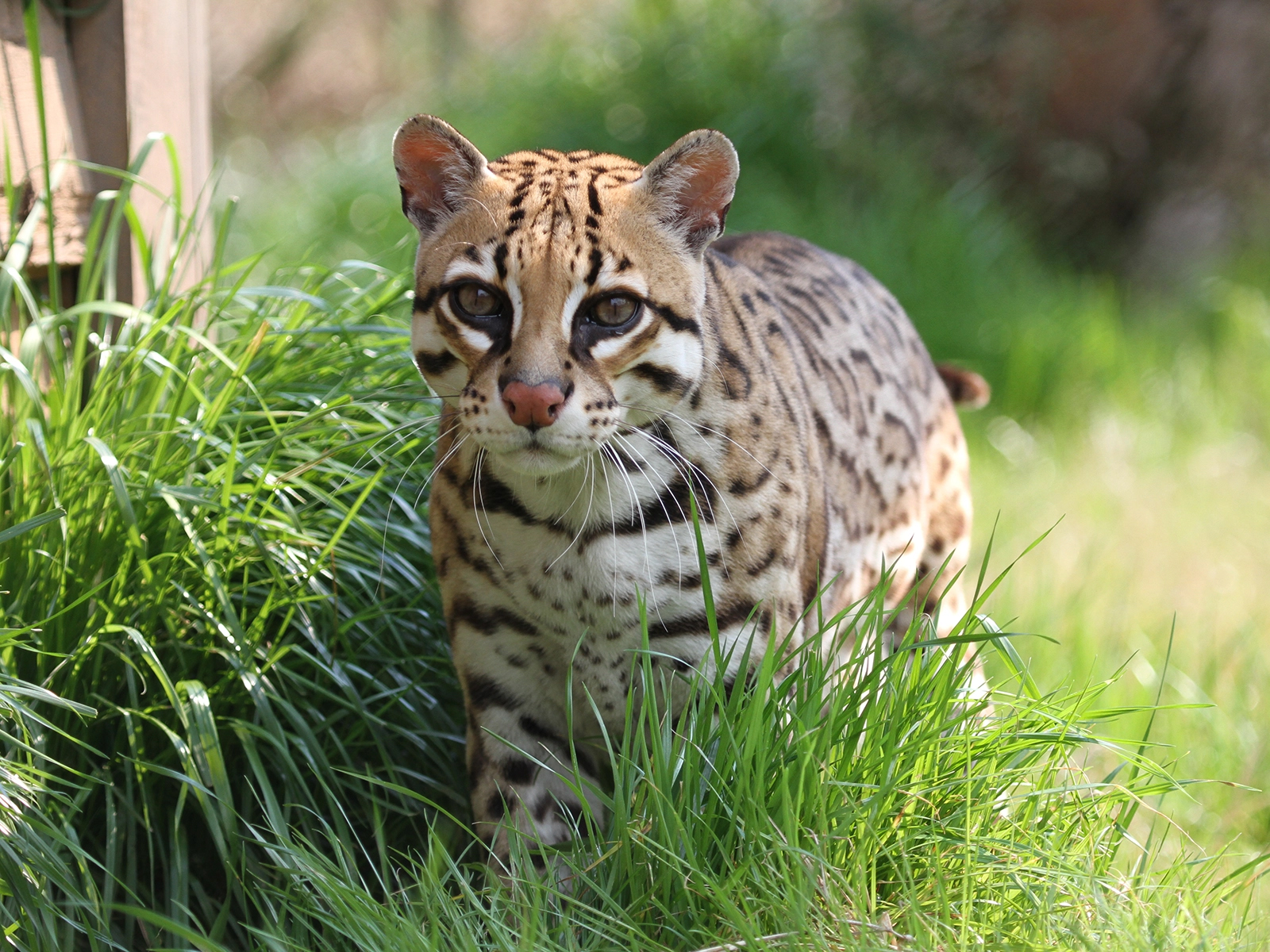
Mammalia
Carnivora
Felidae
Mexico, Central and South America to northern Argentina, with remnant populations still in Texas
Body Length: 26 - 40 in
Tail Length: 12 - 18 in
Weight: 24 - 35 lbs
From jungle areas and tropical rain forests to dry scrub and chapparal zones
1 - 4 kittens
Gestation: 70 days
Rodents, rabbits, young deer, birds, snakes, and fish
Least Concern
Their eyes have a special layer on the inside that collects light, so ocelots can see much better in the dark than people can.
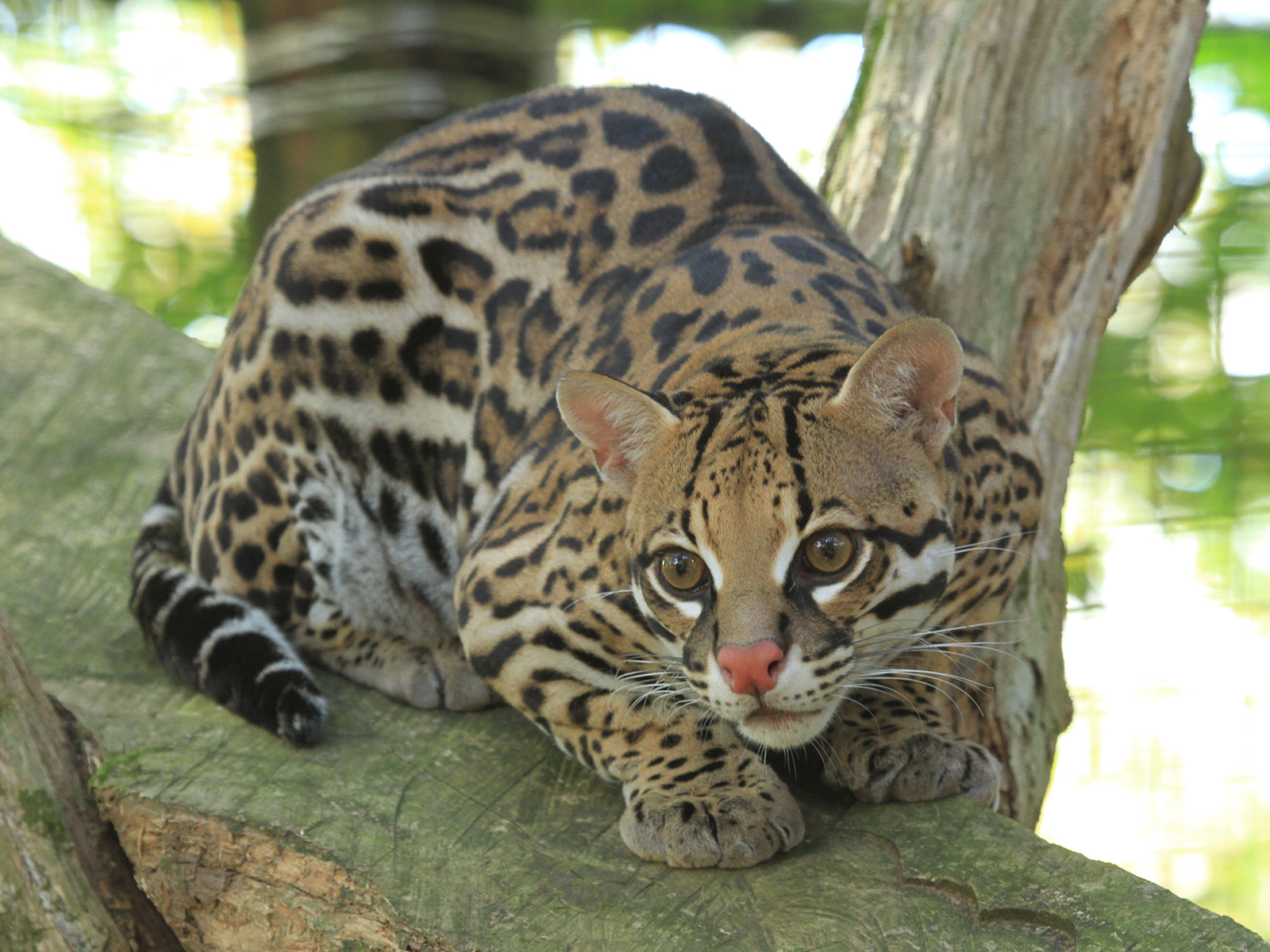
Ocelots are ambush hunters and very active at night. They rest in trees or dense brush during the day.
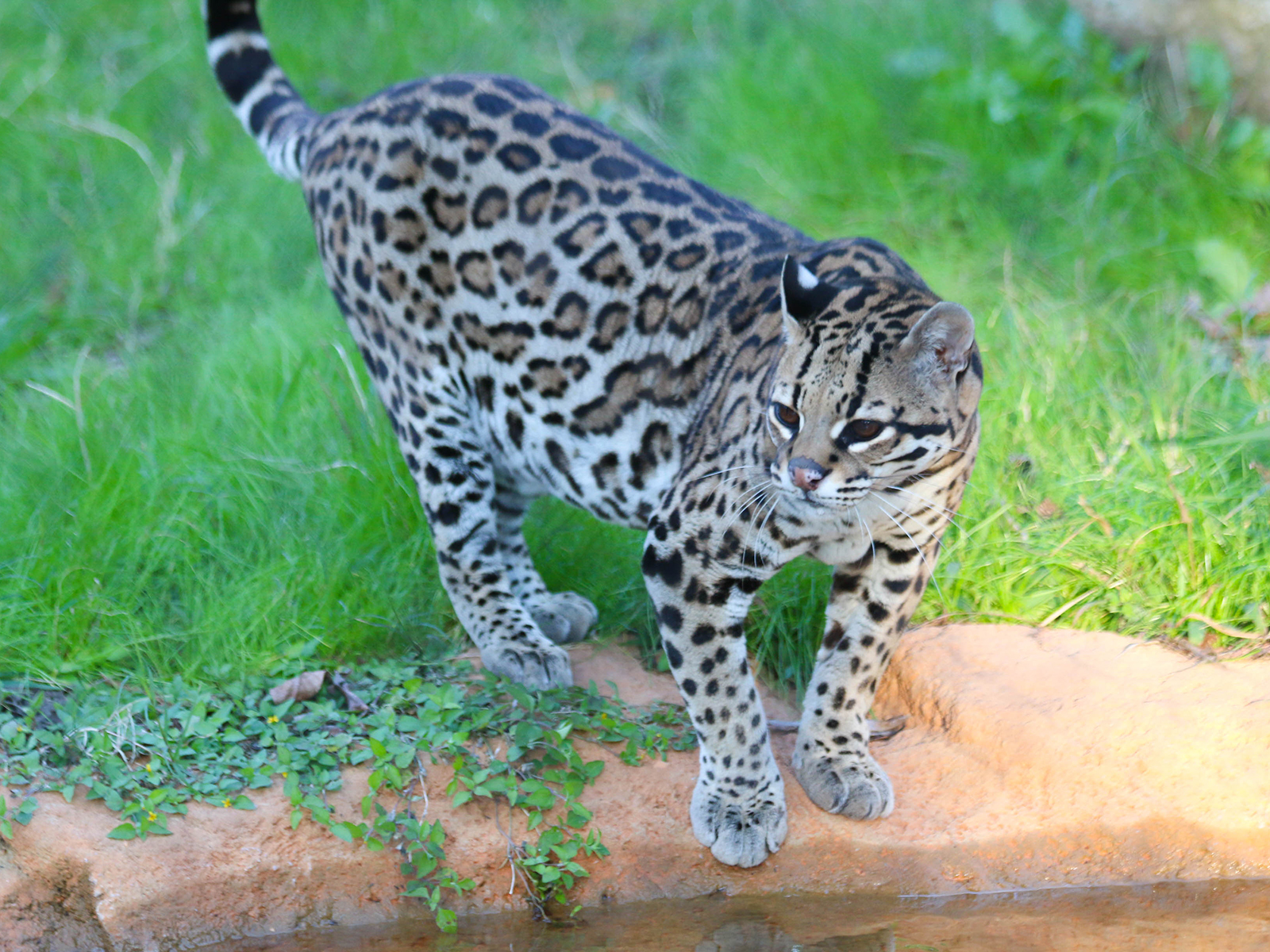
Ocelots require habitat that supports a plentiful prey population and provides cover from which to hunt prey. Ocelots mark their territory with urine and scent markings. Ocelots have webbed forepaws for swimming.
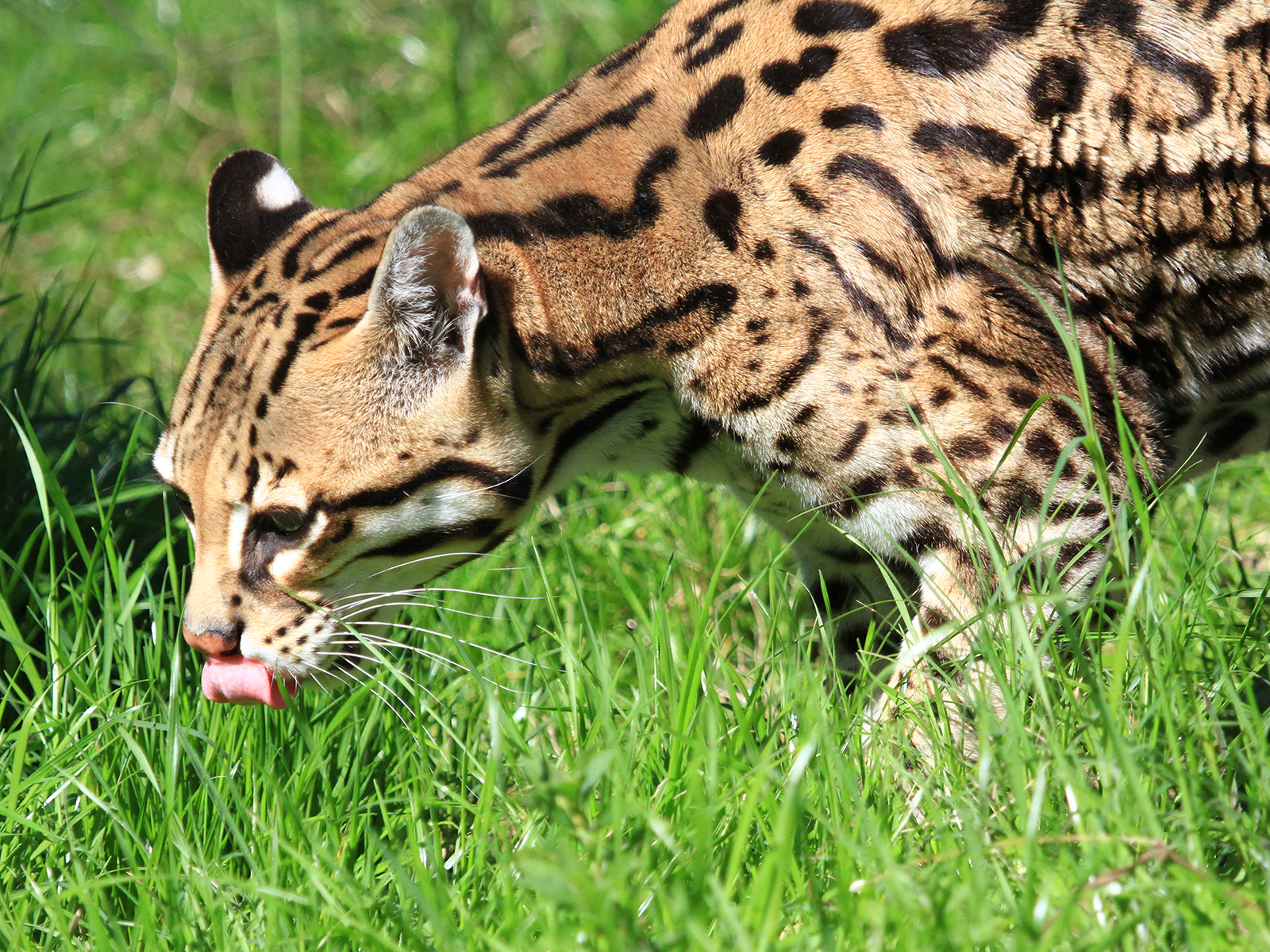
Ocelots face threats from habitat loss and fragmentation, the fur trade and the pet trade. In the U.S., ocelots once ranged throughout the southwest from Arizona to Louisiana, yet now less than 100 ocelots are estimated to remain in Texas. They are considered endangered by the US Fish & Wildlife Service.
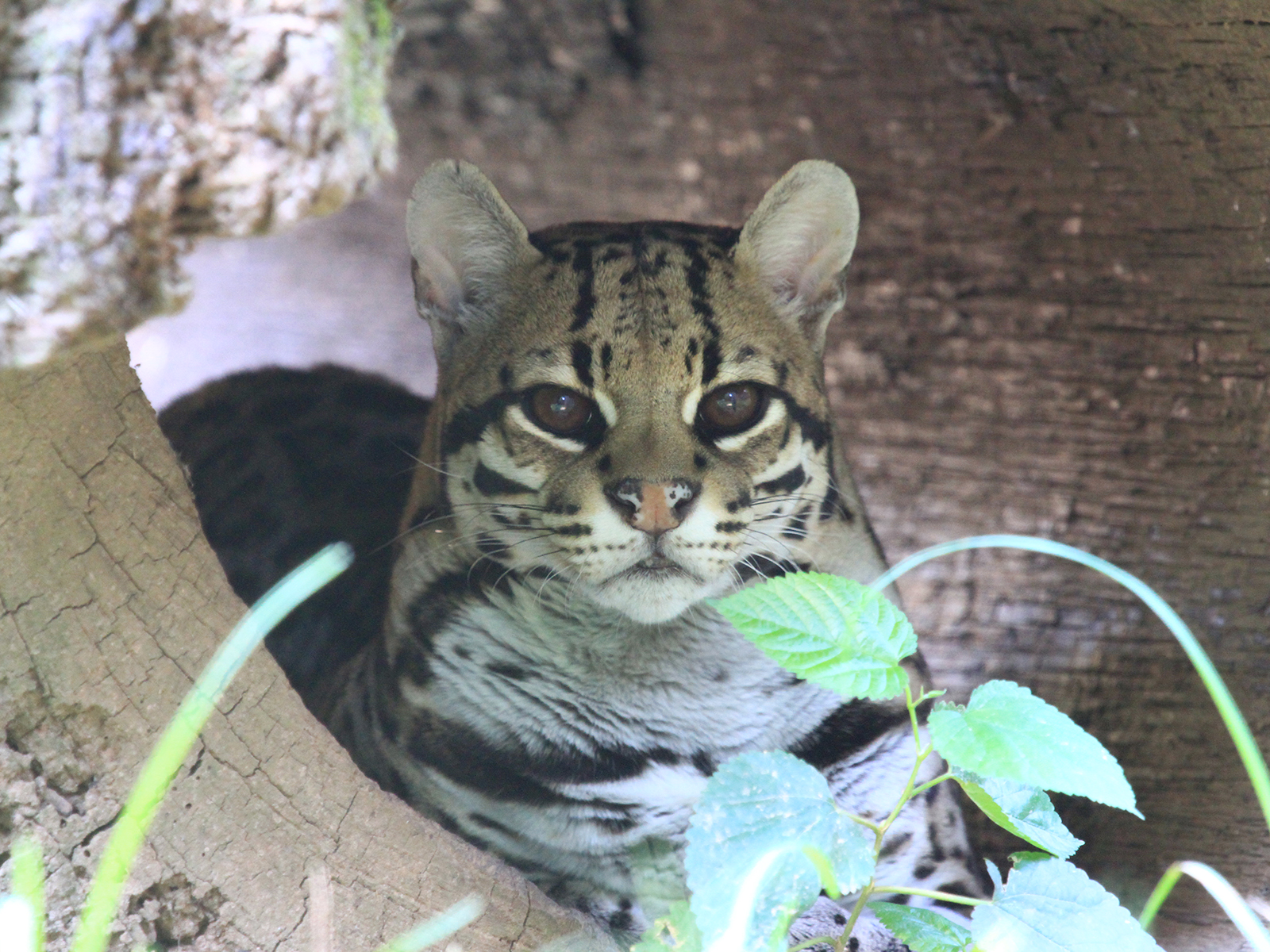
Advocate for wildlife crossings and better road planning in areas with ocelot populations. Drive carefully in areas where ocelots are known to live, such as the dense thorny shrublands of South Texas. Vehicular collisions are a leading cause of death for these animals.
Encourage poison-free rodent control. Ocelots prey on small mammals and can be poisoned by consuming rodents that have ingested poison.
Support efforts to protect and restore habitat. This is a critical step, as ocelots rely on large, contiguous areas of dense brush for survival.
Makusi: Born January 14, 2020
Sriracha: Born May 29, 2021
